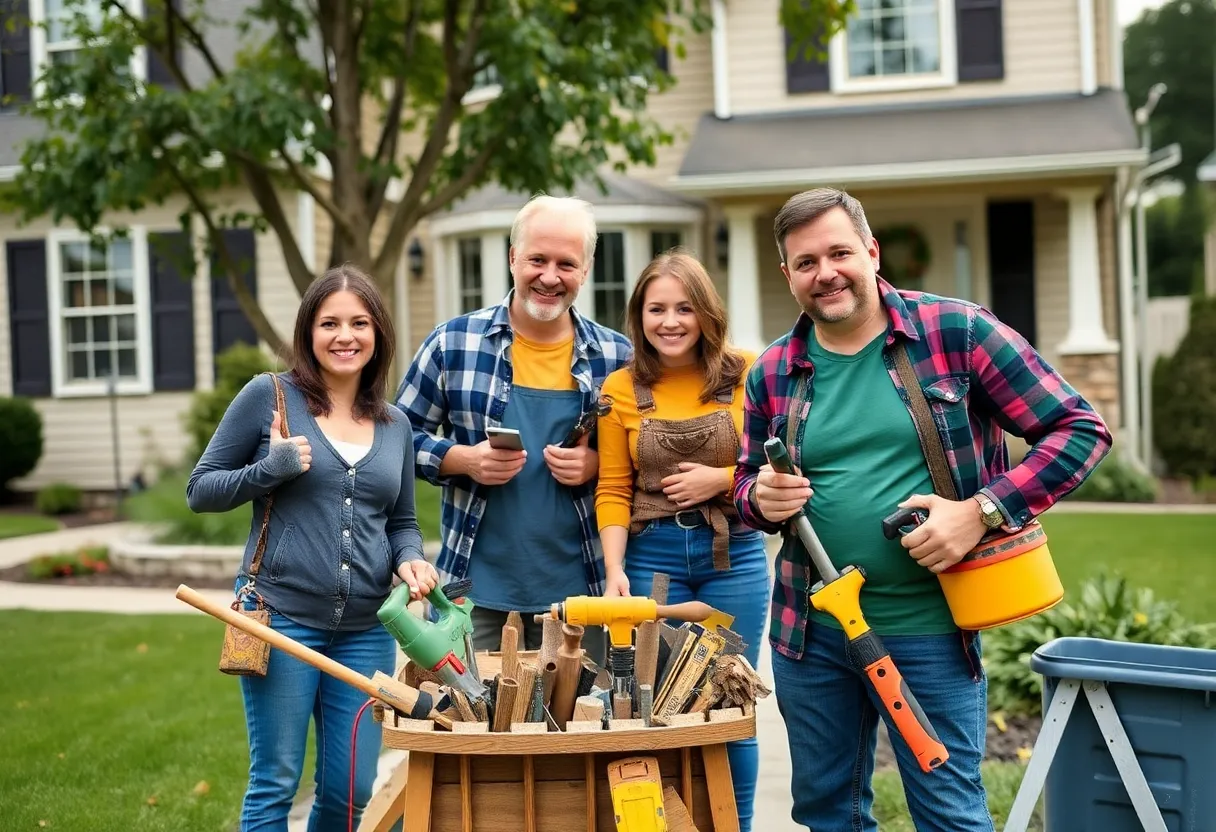What Are the Most Effective Techniques for DIY Home Maintenance?
Maintaining a home is a continuous process that requires regular attention and strategic intervention. Effective DIY home maintenance can not only extend the lifespan of your property’s components but also significantly reduce repair costs over time. This article examines proven techniques and best practices to empower homeowners to perform maintenance tasks confidently, efficiently, and safely.
Foundations of Effective Home Maintenance
1. Regular Inspection and Routine Checks
Consistent inspection is the cornerstone of effective home upkeep. Routine checks help identify potential issues before they escalate into costly repairs. Focus on key areas such as roofs, gutters, plumbing, electrical systems, windows, and foundation.
- Visual assessments: Look for signs of damage or wear, including cracks, leaks, corrosion, or discoloration.
- Functionality tests: Ensure that doors, windows, and appliances operate smoothly.
- Scheduled frequency: Conduct inspections bi-annually—preferably in spring and fall.
Keeping a maintenance log streamlines this process, ensuring that no essential tasks are overlooked.
2. Understanding Home Systems and Components
Knowledge is vital for effective DIY maintenance. Familiarize yourself with your home’s key systems:
- Plumbing: Pipes, fixtures, and drains.
- Electrical: Wiring, outlets, circuit breakers.
- HVAC: Heating, ventilation, and air conditioning units.
- Structural elements: Foundation, studs, roofing, and siding.
This understanding allows precise diagnostics and appropriate intervention, minimizing unnecessary costs and ensuring safety.
Most Effective Techniques for DIY Home Maintenance
1. Preventive Maintenance
Prevention is always better than repair. Establishing a preventive maintenance routine protects your home efficiently:
- Clean gutters and downspouts annually to prevent water damage.
- Replace HVAC filters every 1-3 months to maintain air quality and system efficiency.
- Seal gaps around doors and windows to improve energy efficiency and prevent drafts.
- Inspect roof for damaged shingles or tiles, especially after adverse weather.
- Drain sediment from water heaters annually to prolong lifespan and efficiency.
Engaging in preventive steps reduces emergency repairs, saving both time and money.
2. Use of Quality Tools and Materials
Effective DIY maintenance hinges on the right tools and materials:
- Essential tools: Cordless drill, screwdrivers, pliers, adjustable wrenches, level, measuring tape, utility knife, and safety equipment.
- High-quality materials: Use durable paint, sealants, and hardware to ensure longevity.
Investing in proper tools and quality materials ensures tasks are performed accurately and lasting results are achieved.
3. Safety Precautions and adherence to Codes
Safety must be prioritized during DIY tasks:
- Wear appropriate protective gear: Gloves, goggles, masks, and boots.
- Work with proper lighting and ventilation especially when handling paints, chemicals, or electrical components.
- Turn off utilities: Shut off water, electricity, or gas supply before working on related systems.
- Follow local building codes and regulations: Ensures compliance and safety.
When in doubt, consult with a professional to confirm safety measures and code adherence.
4. Efficient Repair Techniques
When repairs are inevitable, employ effective techniques to restore and reinforce home components:
- Crack Repair: Use epoxy or polyurethane injections for foundation cracks, ensuring structural stability.
- Leak Fixing: Locate sources first, then apply appropriate sealants or replace damaged sections.
- Paint and Surface Repairs: Proper surface preparation enhances adhesion and finish quality.
- Electrical repairs: Use a multimeter for diagnostics, and adhere strictly to safety standards when replacing outlets or wiring.
Documentation of repair procedures aids future troubleshooting and maintenance planning.
5. Seasonal Maintenance Tasks
Tailoring maintenance to seasonal needs ensures comprehensive care:
Spring
- Inspect and repair roof damages from winter storms.
- Service HVAC systems before peak usage.
- Clean and reseal decks and outdoor furniture.
Summer
- Check irrigation systems for leaks or blockages.
- Inspect window and door seals for drafts.
- Clean and maintain outdoor drainage systems.
Fall
- Clean gutters and downspouts to prevent ice dams.
- Trim trees near the house to prevent damage during storms.
- Prepare heating systems for winter.
Winter
- Insulate exposed pipes to prevent freezing.
- Check for ice dams and remove snow buildup.
- Inspect chimney and fireplace for safe operation.
Creating seasonal maintenance checklists simplifies planning and ensures nothing is overlooked.
6. Effective Troubleshooting and Diagnostics
Accurate diagnosis prevents unnecessary repairs and promotes first-time fix success:
- Electrical issues: Use a multimeter to test outlets and circuits.
- Plumbing problems: Check water pressure and inspect for leaks; listen for unusual sounds.
- HVAC concerns: Listen for abnormal noises, check thermostat settings, and inspect filters.
- Structural concerns: Look for cracks, uneven floors, or water intrusion signs.
Document findings to track recurring issues and inform future maintenance actions.
Tools and Resources to Enhance DIY Capabilities
1. Educational Resources and Guides
Utilize comprehensive manuals, detailed online tutorials, and home improvement books. Visual aids clarify complex procedures, reducing errors.
2. Maintenance Checklists and Scheduling Apps
Use digital or physical checklists for routine tasks. Schedule reminders to maintain consistency and prevent neglect.
3. Professional Consultation and When to Hire Experts
Recognize limitations. Certain tasks—like major electrical or structural work—require licensed specialists to ensure compliance and safety.
Establish a network of trusted professionals for emergencies or complex repairs.
Conclusion: Building a Sustainable DIY Maintenance Strategy
Developing a strategic approach maximizes the effectiveness of DIY home maintenance. Regular inspections, preventive care, proper tool usage, adherence to safety standards, and timely repairs form the foundation of a durable and safe dwelling. By integrating these best practices, homeowners can ensure their homes remain in optimal condition for years to come. Remember: diligent maintenance is an investment in value, safety, and comfort.
Author: STAFF HERE INDIANAPOLIS WRITER
The INDIANAPOLIS STAFF WRITER represents the experienced team at HEREIndianapolis.com, your go-to source for actionable local news and information in Indianapolis, Marion County, and beyond. Specializing in "news you can use," we cover essential topics like product reviews for personal and business needs, local business directories, politics, real estate trends, neighborhood insights, and state news affecting the area—with deep expertise drawn from years of dedicated reporting and strong community input, including local press releases and business updates. We deliver top reporting on high-value events such as the Indianapolis 500, Indy Jazz Fest, and the Indiana State Fair. Our coverage extends to key organizations like the Indy Chamber and Visit Indy, plus leading businesses in motorsports and healthcare that power the local economy such as Indianapolis Motor Speedway and IU Health. As part of the broader HERE network, we provide comprehensive, credible insights into Indiana's dynamic landscape.





